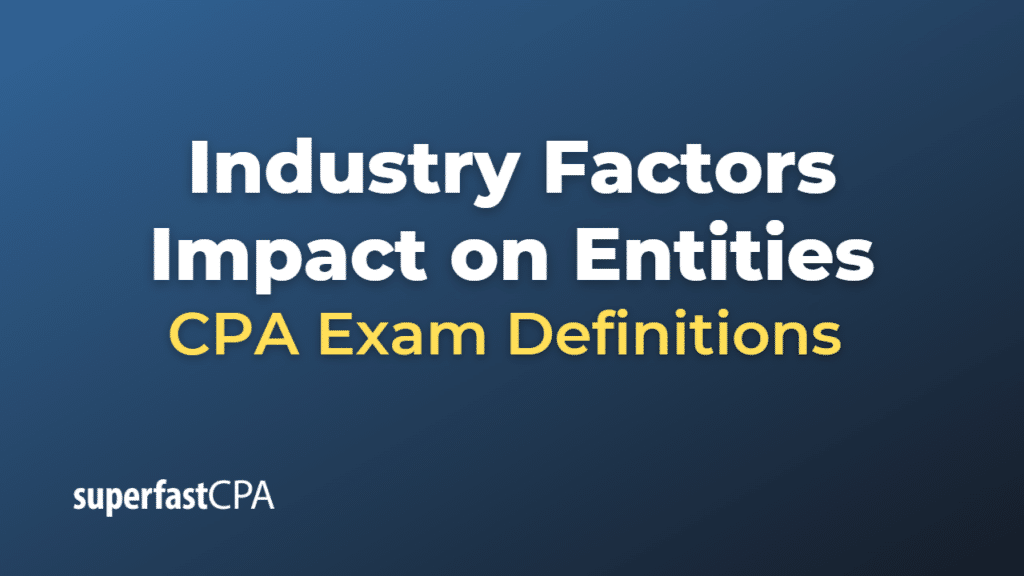Industry Factors Impact on Entities
Industry factors can impact an entity, its operations, and the inherent risk of material misstatement in its financial statements. Industry factors refer to the various characteristics, trends, and competitive forces that are specific to an entity’s industry and that can influence its operating environment and financial reporting.
Some ways in which industry factors can impact an entity include:
- Competitive environment: The level of competition within an industry can affect an entity’s market share, pricing power, and profitability, which in turn can impact its financial performance and financial reporting.
- Technological changes: Rapid technological advancements and innovation can lead to shifts in business models, product obsolescence, or changes in consumer preferences, potentially affecting an entity’s operations, financial performance, and the inherent risk of material misstatement in the financial statements.
- Industry-specific regulations: Industries may be subject to unique regulatory requirements that can affect an entity’s operations, compliance costs, and reporting obligations, potentially increasing the complexity of its financial reporting and the risk of material misstatement.
- Economic cycles: Some industries are more sensitive to economic cycles, which can cause fluctuations in an entity’s revenue, profitability, and financial performance, impacting the inherent risk of material misstatement in the financial statements.
- Supply chain risks: Entities in certain industries may face supply chain risks related to the availability, cost, or quality of raw materials or components, which can impact their operations, financial performance, and financial reporting.
These industry factors can influence the inherent risk of material misstatement in several ways:
- Complexity of transactions: Industry factors can increase the complexity of an entity’s transactions, such as the valuation of specialized inventory, revenue recognition for long-term contracts, or accounting for industry-specific assets, potentially increasing the risk of misstatement.
- Estimation uncertainty: Industry factors can create uncertainties in the estimation of assets, liabilities, or provisions, leading to a higher risk of material misstatement due to estimation errors or the use of inappropriate assumptions.
- Management bias: Management may have incentives to manipulate financial results, downplay risks related to industry factors, or make aggressive accounting estimates to meet industry benchmarks or portray a positive image, increasing the risk of material misstatement.
- Disclosure requirements: Entities may be required to disclose information related to their exposure to industry factors, such as risks, contingencies, or compliance with specific regulations, which can increase the risk of material misstatement due to incomplete or inaccurate disclosures.
Auditors should consider these industry factors when assessing the inherent risk of material misstatement during the planning and execution of an audit. Understanding the impact of industry factors on an entity’s operations and financial reporting can help auditors design appropriate audit procedures to address these risks and provide reasonable assurance that the financial statements are free from material misstatement.













